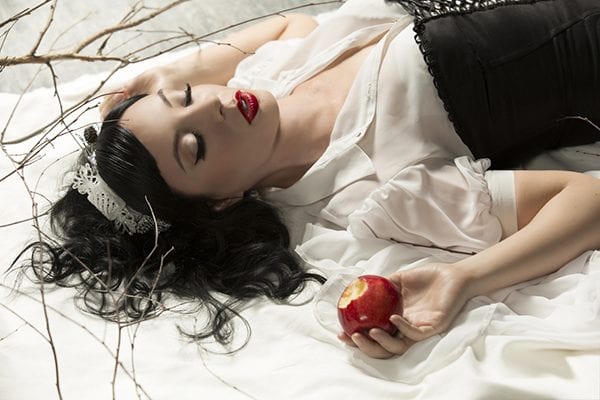Tale as old as time: The fairy-tale
Tale as old as time: The fairy-tale
Tale as old as time: The fairy-tale
-
Hannah
-
Hannah

Once upon a time… those four simple words evoke such wonderful memories for me. I remember being a little girl, bathed and ready for bed, sitting by my governess, Zula, as she read to me the tales of Hans Christian Anderson and the Brothers Grimm. ‘The Little Mermaid’, ‘The Nightingale’, ‘The Snow Queen’, ‘The Ugly Duckling’, ‘Cinderella’,‘Rapunzel’, ‘Rumpelstiltskin’, ‘Sleeping Beauty’, ‘Snow White’ – I was entirely enthralled by these stories, and so many more.
Reading fairy tales at bedtime was pivotal in inspiring a lifelong love of reading, and of course of romance, for my favourite stories were those centered on love and with a happy-ever-after ending. But it was when Zula closed the book that I was most captivated. A wonderfully creative and imaginative woman, she would re-tell the traditional stories with new, inventive twists, and share stories of her own imaginings. I would gaze up at her face, mesmerised by the faraway look in her eyes and the rich timbre of her voice, and be transported to magical worlds.
In telling me stories, rather than just reading them, Zula was following a tradition dating back as far as language itself. It has long been known that those who first authored fairy tales, like Hans Christian Anderson and the Brothers Grimm in the nineteenth century, were not the creators of the tales: they were putting into print stories told orally at the firesidefor generations.
Take the fairy tale ‘Beauty and the Beast’, for example, one of my longtime favourites. It was first written by French novelist Gabrielle-Suzanne Barbot de Villeneuve and published in 1740 as ‘La Belle et la Bête’. Recently, researchers from the universities of Durham and Lisbon published a paper in which they traced the origins of this story back 4,000 years, ‘long before the emergence of the literary record’ (source: The Guardian). That means stories like this one predate modern languages like English; they were, according to the researchers, ‘probably told in an extinct Indo-European language’. Of course, since ‘Beauty and the Beast’ was put down on paper in 1740, the story has continued to be told and reimagined across various mediums, from literature to theatre to music to film.
What is it about fairy tales that makes them endure in this way? Folklorist Sara Graça da Silva explains that: ‘the motifs present in fairytales are timeless and fairly universal, comprising dichotomies such as good and evil; right and wrong, punishment and reward, moral and immoral, male and female.’No matter how society changes, how people evolve, these stories are relevant.
As a result, there are fairy tales all around us. Many works of fiction draw upon these old tales. The surprise smash hit movie Frozen, for example, is a retelling of Hans Christian Anderson’s ‘The Snow Queen’. Academics have argued that all literature can be stripped back to only seven core stories (see my blog post https://hannahfielding.net/staging/1129/drawing-upon-the-seven-core-stories/), and these core stories are to be found in timeless fairy tales.
Fairy tales are, therefore, a firm foundation for writers. I was very lucky to have Zula read the tales to me; but I was luckier still that she went a step further and embroidered upon the tales, using them as a basis for new, magical stories of her own.The idea that one could devise stories for oneself was immensely stirring to me, and I have no doubt that the seeds for my future writing career were sown through Zula’s storytelling.
I will leave you with my favourite quote from Albert Einstein: ‘If you want your children to be intelligent, read them fairy tales. If you want them to be more intelligent, read them more fairy tales.’
